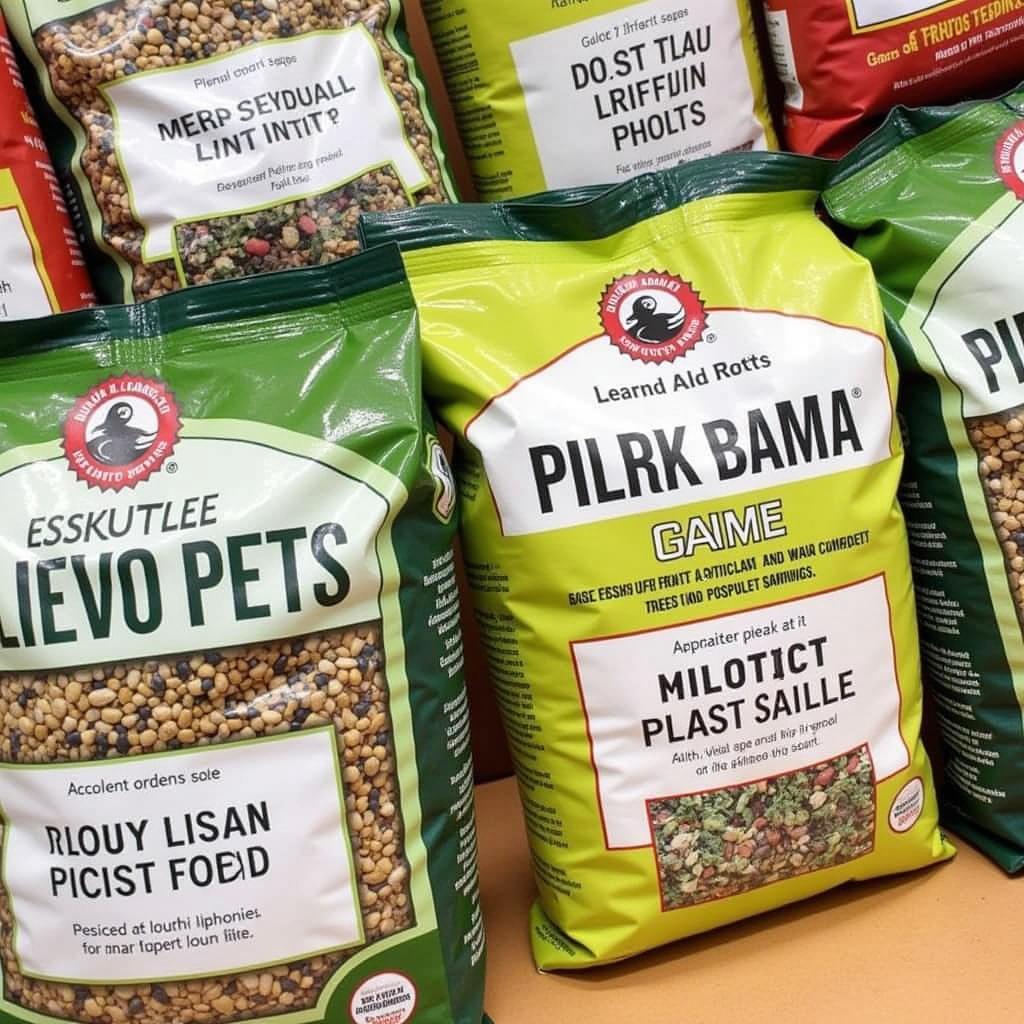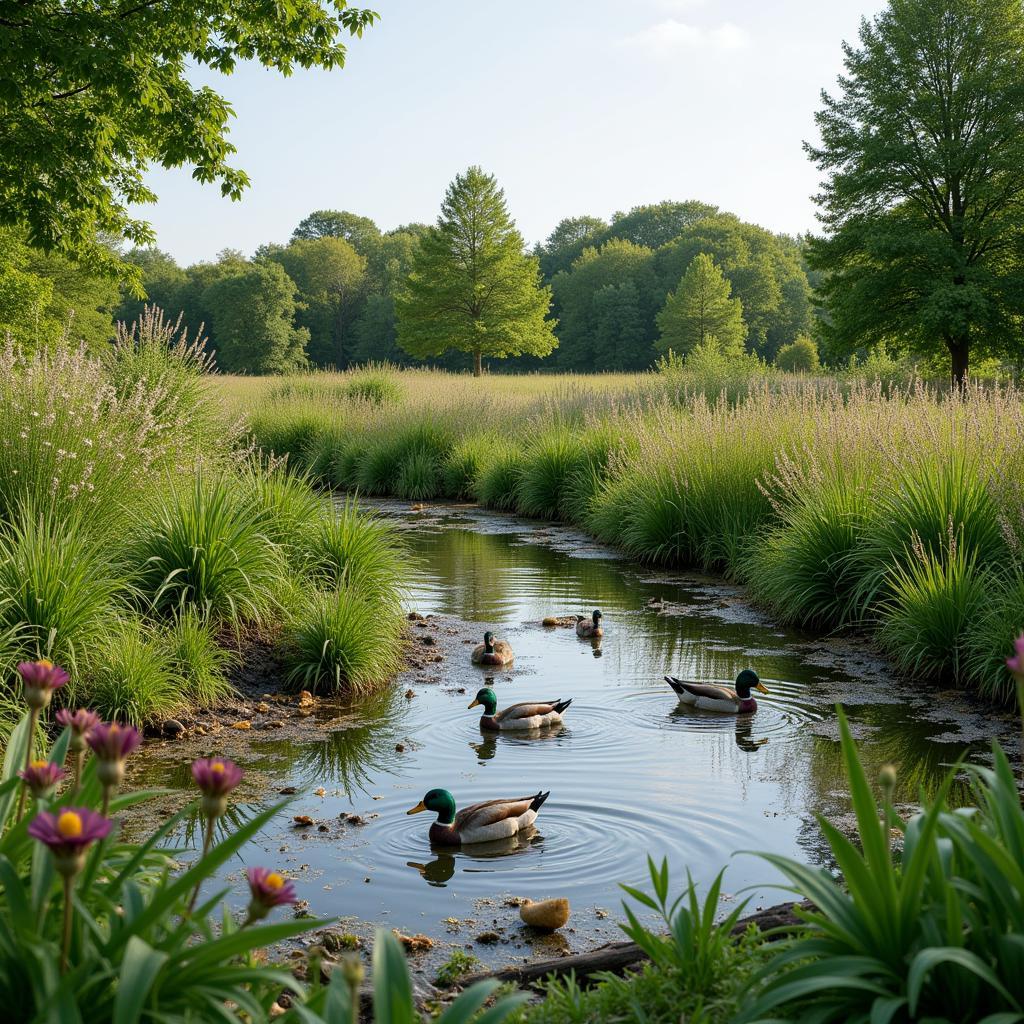Duck Food Plot Seed. These three little words are music to the ears of any waterfowl hunter looking to attract more ducks to their property. But establishing a thriving duck food plot is more than just scattering some seeds and hoping for the best. It requires careful planning, a solid understanding of duck preferences, and a commitment to providing the right environment for these birds to flourish.
Understanding Duck Food Plots
Before we dive into the specifics of duck food plot seed, let’s first understand what constitutes a duck food plot and why they are so beneficial.
In essence, a duck food plot is a dedicated area of land managed to provide supplemental food sources for ducks. These plots often consist of a mix of aquatic plants, grains, and legumes that ducks find particularly palatable.
Why go through the effort? Well, providing a reliable and abundant food source can significantly increase the number of ducks visiting your property throughout the hunting season. It’s a win-win situation: you contribute to waterfowl conservation efforts and enhance your hunting opportunities.
Selecting the Right Duck Food Plot Seed
Now, let’s talk seeds! Choosing the appropriate duck food plot seed is crucial for the success of your plot. Here are some factors to consider:
- Region: Different regions have different climates and soil types that favor certain plant species. Make sure the seeds you choose are well-suited for your geographical location.
- Water Depth: Ducks utilize a variety of water depths for feeding. Consider incorporating seeds that thrive in different water conditions, from shallow mudflats to deeper water areas.
- Duck Species: Different duck species have varying dietary preferences. Research the specific types of ducks common in your area and select seeds accordingly.
 Bags of various duck food plot seeds arranged on a wooden table.
Bags of various duck food plot seeds arranged on a wooden table.
Popular Duck Food Plot Seed Options
Here’s a rundown of some highly effective and popular duck food plot seed choices:
- Japanese Millet: A favorite among ducks, Japanese millet grows quickly and provides abundant seeds. It’s well-suited for moist soils and shallow water areas.
- Brown Top Millet: Similar to Japanese millet, brown top millet is another excellent option for attracting ducks. It’s known for its high seed production and tolerance to varying soil conditions.
- Corn: A staple in duck diets, corn is a highly attractive food source. Plant corn in drier areas of your plot or along the edges.
- Rice: Especially appealing to mallards and other dabbling ducks, rice can be grown in flooded areas of your plot.
- Smartweed: This aquatic plant produces seeds that ducks find irresistible. It thrives in shallow water and can create excellent cover for waterfowl.
Remember, this is not an exhaustive list. Consult with your local agricultural extension office or wildlife management agency for region-specific recommendations.
Planting and Maintaining Your Duck Food Plot
Once you’ve selected your seeds, it’s time to get planting! Here are the basic steps involved:
- Soil Preparation: Test your soil and amend it as needed to ensure optimal pH levels and nutrient content.
- Planting: Follow the instructions on your seed packets carefully for seeding rates and planting depths.
- Water Management: Control water levels throughout the growing season to encourage healthy plant growth and provide suitable foraging areas for ducks.
- Weed Control: Keep weeds in check to prevent competition with your desired plants.
 A thriving duck food plot filled with a variety of plants and visited by a flock of ducks.
A thriving duck food plot filled with a variety of plants and visited by a flock of ducks.
Reaping the Rewards
Creating a thriving duck food plot requires time, effort, and a bit of upfront investment. But the rewards are well worth it. By providing a valuable food source for ducks, you contribute to their well-being, enhance your property’s appeal to waterfowl, and create lasting memories in the field.
Remember, successful duck food plots don’t happen overnight. Be patient, observe your plot, make adjustments as needed, and enjoy the journey of attracting more ducks to your property.
Frequently Asked Questions
1. When is the best time to plant duck food plot seed?
The ideal planting time varies depending on your region and the specific plant species. Generally, late spring or early summer is a suitable timeframe for many duck food plot seeds.
2. How much seed do I need for my duck food plot?
Seeding rates are typically indicated on the seed packets. Factors like plot size, desired plant density, and seed germination rates will influence the total amount of seed required.
3. How do I control water levels in my duck food plot?
If your plot is located in a naturally flooded area, you might consider installing water control structures like flashboard risers or levees. Consult with a wildlife biologist or experienced duck food plot manager for guidance.
4. What are some common mistakes to avoid when creating a duck food plot?
Overlooking soil testing, improper water management, neglecting weed control, and choosing unsuitable seed varieties are common pitfalls to avoid.
5. Where can I find more information on duck food plot management in my area?
Contact your local agricultural extension office, wildlife management agency, or conservation organizations dedicated to waterfowl for region-specific advice and resources.
Need Help?
For personalized assistance with creating your duck food plot, contact Mina Cones Food at Phone Number: 02437655121, Email: minacones@gmail.com, or visit us at 3PGH+8R9, ĐT70A, thôn Trung, Bắc Từ Liêm, Hà Nội, Việt Nam. Our 24/7 customer support team is ready to assist you!